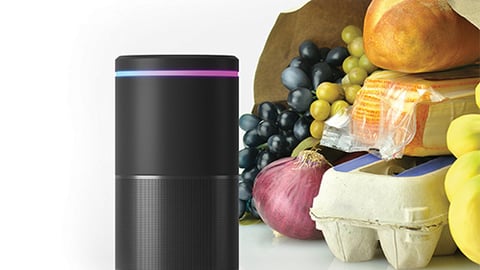Omnichannel Will Change Grocery Shopping Forever
Grocery shopping is a necessary part of life, yet the way in which consumers shop for groceries has not evolved with the same ease that shopping for other items such as clothing or even cars has. Grocers are faced with a unique challenge when it comes to providing a seamless, innovative shopping experience to customers.
How can retailers recreate online the experience of walking down the aisles and weighing produce? How do customers manage a cart full of 50 items or more from their smartphones?
These are not easy questions to answer, and grocers are still working out the kinks, but one thing is overwhelmingly clear: The grocery experience is changing, and grocers need to adapt now to keep pace.
Still not convinced? “The Store of the Future” report, from Coca-Cola Retailing Research Council and Kantar Consulting, predicts that online grocery sales will take 20 percent of total grocery retail by 2025. And according to Forrester, the global online grocery market will grow at a compound annual growth rate (CAGR) of 17.3 percent to reach $334 billion by 2022, capturing 5.2 percent of total sales.
So, before we even focus on great in-store advancements like robots and smart shelves, how can grocers create a seamless grocery experience online – something often easier said than done?
Key Considerations for A Unified Online Shopping Experience
When looking to engage with a customer, bring them to shop and ultimately get them to purchase, there are a few essential ingredients:
- First, an easily navigable website is key. If customers cannot find what they are looking for online in a matter of seconds, chances are they’re already gone.
- Personalized promotions and recommendations also go a long way. No one wants to get more than 100 emails a day with sales and discounts on products they have no interest in. It’s more than likely that grocery customers buy similar items each time they shop, and retailers need a complete picture of shoppers' purchase histories to power these recommendations.
- Another feature that is essential to the online grocery experience is the ability for customers to add products by weight, piece or package. There’s no easy way to replicate a produce scale online, yet retailers need to satisfy customers who shop items by the pound. Additionally, retailers need to give consumers the ability to add a large number of items to their carts — a shopper could have up to 100 items, and grocers need an ecommerce platform that can handle that.
- Shoppers are also seeking the option to shop for items from a particular recipe, or the ability to search options for specific events like the Super Bowl or a birthday party. Similar to how items such as candles and cakes are situated close together in-store to optimize sales, grocers need to take this same approach online.
- Like on any good ecommerce site, shoppers should have the option to view and write reviews on their favorite products. In a physical grocery store, this is not an option, but in the evolving world of online grocery, customers should be able to express their opinions and get honest feedback from fellow shoppers.
- The ability to fulfill how they want, when they want will also be key for customers. Options to shop in-store or online, pickup, ship to home – the list goes on. The same can be said for flexible payment options. The ability to pay in-store and ship to home or pay online and pick up in-store will help revolutionize the grocery experience.
Technology’s Shifting Role
In the modern era of grocery, consumers can shop on their phones and from their driver’s seats. Stores are managing their inventories with smart-shelf technology, and BOPIS (buy online, pickup in-store) is now almost commonplace across the retail industry. These innovations, coupled with a stellar ecommerce platform, marry the online and in-store grocery experience, allowing an ideal and efficient experience for all customers.
And it doesn’t stop with the consumer – technology is helping store associates level up their skills as well. These days, employers are looking for hardworking individuals who can build customer relationships, in addition to having superb selling skills.
Essentially, the job of store associates in 2019 is less about bagging groceries and more about knowing how to manage the wealth of technology and buying options that consumers have at their fingertips every day. Just like grocery stores are evolving, the roles of store associates are evolving, too.
Retailers know that customer demands are always shifting, and the flexibility to keep up with and adapt to them will be crucial. It's clear that grocers need to adjust their omnichannel strategies to ensure that they not only are meeting customer expectations online and off, but also are differentiating themselves in the market while building efficiencies to drive sales and margins.







